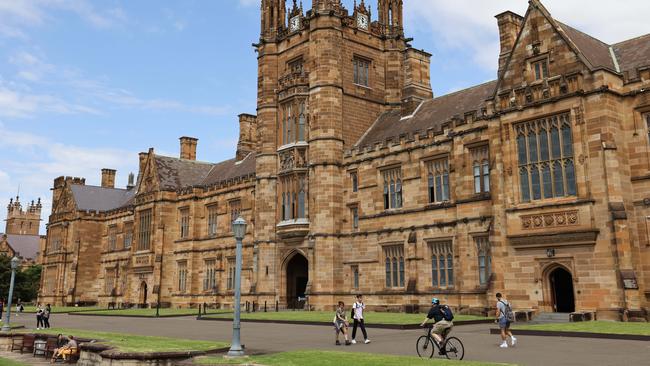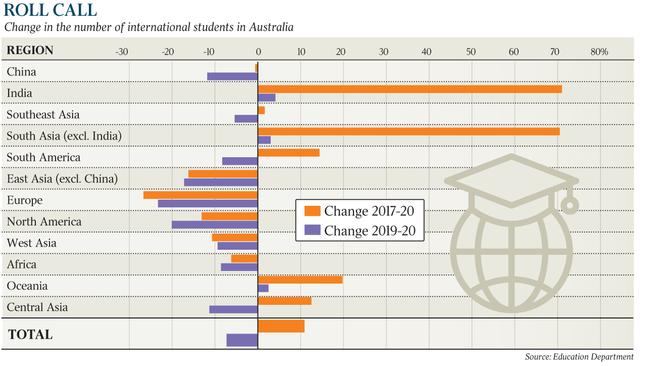Emerging foreign student markets would have to double to rival China and India
The foreign student intake from Africa and South America will have to double if universities are to reduce their reliance on China and India.

Australia’s foreign student intake from emerging markets such as Africa and South America will have to double if universities are to match enrolments from China and India, after the Morrison government urged the sector to reduce its reliance on the Asian superpowers.
Education Minister Alan Tudge last week warned the makeup of the higher education export market — in which 55 per cent of all foreign students are from China and India — was fraught. He said there must be a greater emphasis on finding emerging markets and offering more online options.
Analysis by The Australian shows all 11 countries in Southeast Asia accounted for 139,000 student enrolments in Australia’s higher education system last year and seven countries in South Asia (including Pakistan and Nepal) amounted to more than 119,000 enrolments.
South America’s eight nations accounted for just over 75,000 students, and Africa’s 23 countries made up only 12,663 enrolments.
Those figures pale in comparison with the more than 230,000 Chinese students enrolled in Australian universities last year and the more than 148,000 Indian students.
ANU higher education analyst Andrew Norton said while there had been strong growth out of South America and South-East Asia in particular, emerging foreign student markets would likely never rival China and India.

“South America and Africa do not have the affluent middle classes and the big populations China and India have,” he said.
“Many of those countries are also closer to the United States and Britain, so those countries have an advantage over us.
“There have been some good percentage growths in those markets — especially South America — but fundamentally, it will be hard for those markets to rival China and India.”
The COVID-19 pandemic and the closing of Australia’s international borders have had a devastating impact on universities and the nation’s $30bn education export market.
While strong retention rates of Chinese students for online courses have helped some major universities remain profit-makers, there are concerns the Chinese and Indian markets are still at significant risk.
The number of new Indian students who chose to study at Australian universities collapsed by more than 80 per cent in the second half of last year, as Britain and Canada muscled in on the market with their more open borders. But there are some signs of growth in emerging markets. Enrolments from South Asia (excluding India) grew 70 per cent from 2017 to last year. In that same time period, enrolments from South America grew 14 per cent.

Enrolments from Southeast Asia — which has more mature Australian student markets such as Vietnam — and Africa, which is often cited as an area of potential growth, have either stagnated or gone backwards.
International Education Association chief executive Phil Honeywood called on the Department of Home Affairs, which is in charge of borders and visas, to make it easier for students, especially African students, to come to Australia.
“In New Zealand their Immigration Department operates almost as a marketing arm for Education NZ,” he said. “By contrast, Austrade encourages our education providers to recruit from new markets only to have Home Affairs reject those countries’ student visa applications.”
China has ramped up its hostility to Australian universities as part of a diplomatic and trade offensive, advising its students not to study here.
In a speech at RMIT University in Melbourne last month, Mr Tudge said an over-reliance on China and India affected diversity of thought at universities and the nation’s education markets.
“Currently, just two countries account for more than 55 per cent of all international student enrolments at universities,” he said.
“Not only does concentration limit the diversity of perspectives in classrooms, it also lowers the resilience of the international education sector to changes in global demand, as we saw with the Indian student downturn after 2009.”







To join the conversation, please log in. Don't have an account? Register
Join the conversation, you are commenting as Logout